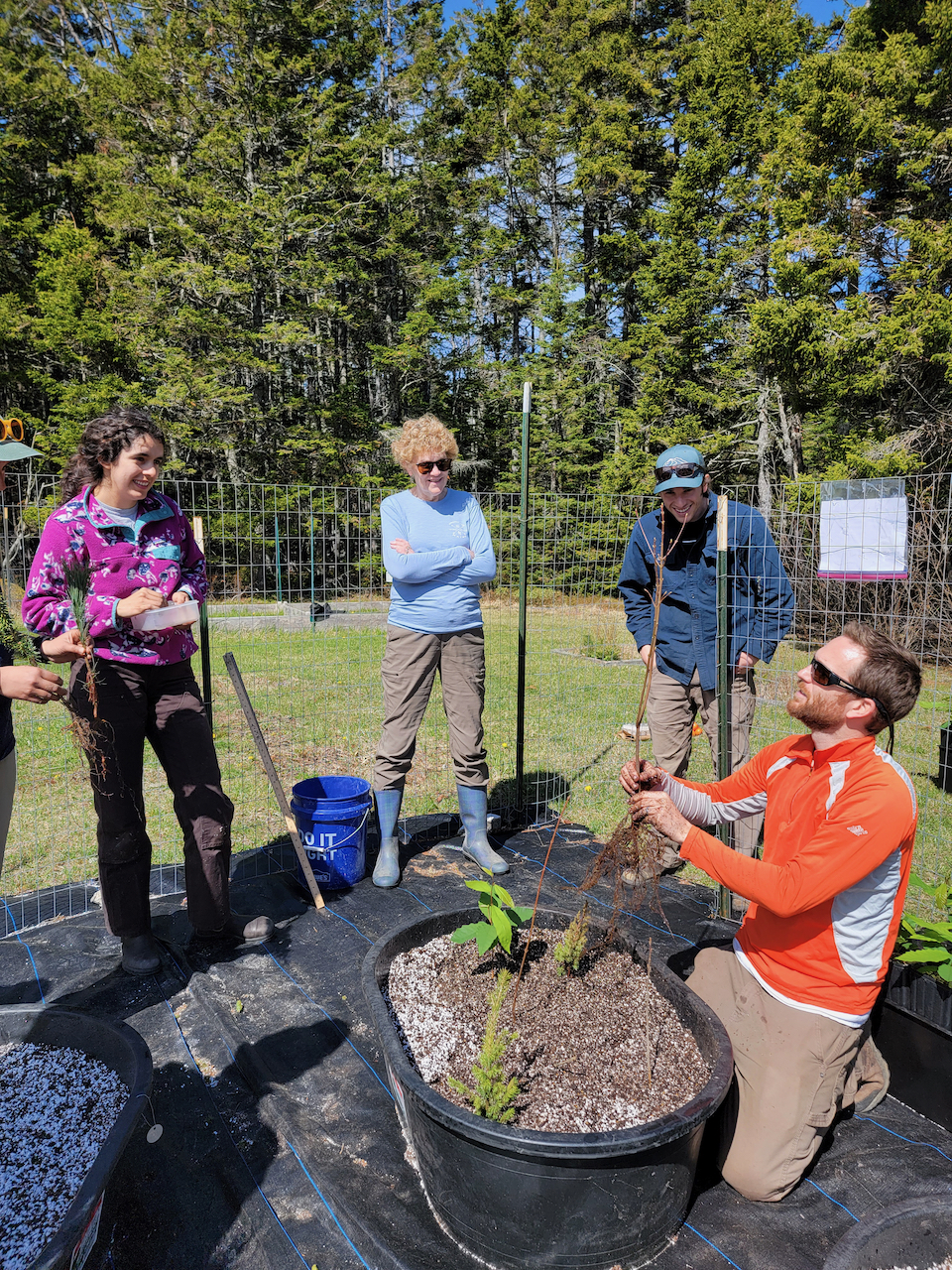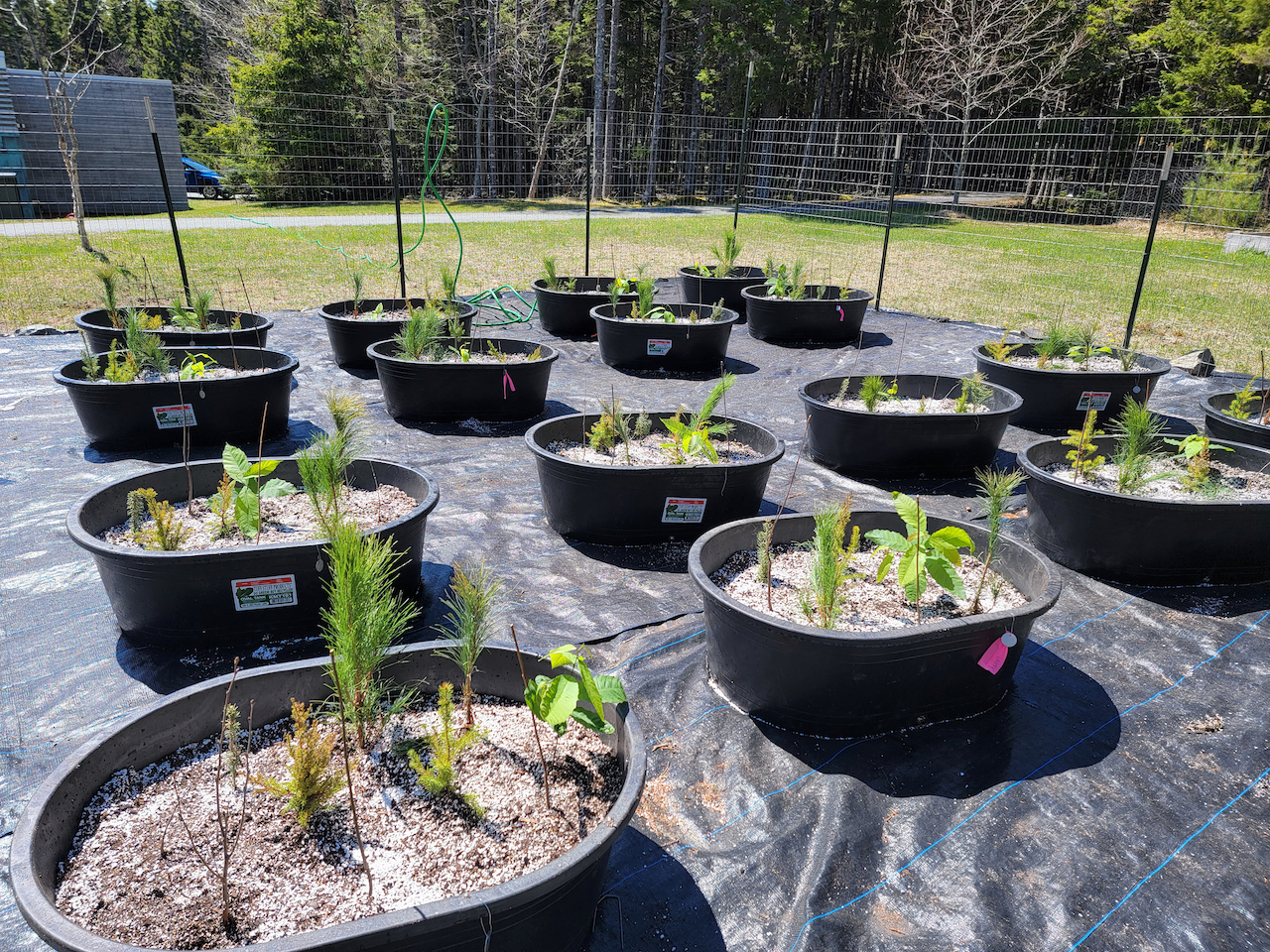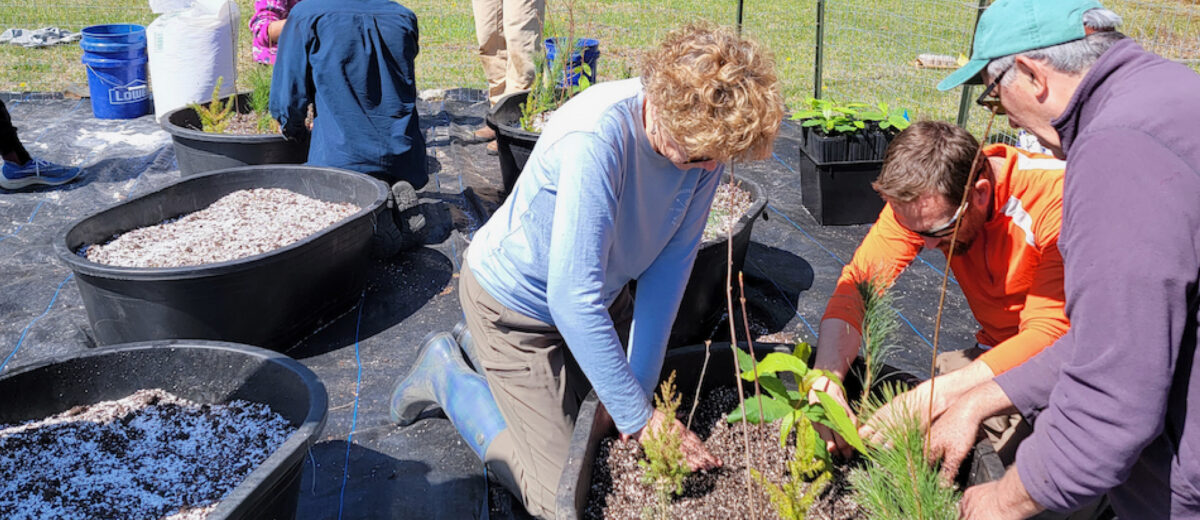by Catherine Devine, photos by Catherine Schmitt
Stretching from Maine through New York, the Northern Forest is home to 2.3 million people, and its vast natural resources have a marked environmental and economic impact.
Historically, Maine’s forests have had an abundance of natural regeneration – the process by which older trees provide seeds that fall, germinate, and ultimately restock the site. A recent study of regeneration in eastern U.S. national park woodlands found that Acadia’s forests are in a “secure” condition. But, with the rapidly rising rate of extreme climate events like heat waves, drought, and mid-winter thaws, we don’t really know what our future forests will look like or how long natural tree regeneration will be enough to sustain them.
 Jay Wason, Nick Fisichelli, Nicole Rogers, and Yongjang (John) Zhang have initiated a new project, funded by Northeastern States Research Cooperative, to determine not only what our future forests will look like, but what land managers can do about it. Their research project, Extreme Climate Impacts on Trees, seeks to learn how tree regeneration in the Northern Forest will respond to extreme drought, heat, and midwinter warming events in order to inform forest management strategies.
Jay Wason, Nick Fisichelli, Nicole Rogers, and Yongjang (John) Zhang have initiated a new project, funded by Northeastern States Research Cooperative, to determine not only what our future forests will look like, but what land managers can do about it. Their research project, Extreme Climate Impacts on Trees, seeks to learn how tree regeneration in the Northern Forest will respond to extreme drought, heat, and midwinter warming events in order to inform forest management strategies.
“Instead of looking at changes in means, we wanted to look at responses to extremes,” said Nick Fisichelli. “On average, temperatures are warming, but then we still get heat waves on top of the changes in average conditions. And it could be those extreme events that sort of push a species or an individual tree beyond its threshold for survival.”
Researchers are running two experiments to simulate future climate conditions throughout the Northern Forest region. At each site saplings are sectioned off into boxed plots containing one tree of 10 different species. The first year of the study is all about acclimating the saplings to their new homes; the experiments will not begin until one year in.
The first experiment will run at six different site locations across Maine and simulate a combination of drought and heatwave conditions on the saplings. The researchers will study the impacts of drought conditions, heatwave conditions, and simultaneous drought and heatwave conditions. Drought conditions will be implemented by covering the tree plots to exclude rain. Heatwave-like conditions will be mimicked by constructing a clear greenhouse structure around each plot. The second experiment, in Orono, Maine, will simulate midwinter thaws of varying lengths on the same 10 tree species by moving select groups of plants into a greenhouse for differing time spans during the winter.
The researchers hope that the experiments will identify the forest tree species that are best and least adapted to future extreme climate conditions. And the research team hopes to narrow the critical information gap that exists between scientists and forest managers by incorporating managers and community members into the research process.
 “[Working alongside forest managers] helps make sure that we’re not just focusing on our one little thing that we think is important because we want to publish papers about it. We’re focusing on things that people are actually concerned about and want to know more about for their forests,” said Jay Wason.
“[Working alongside forest managers] helps make sure that we’re not just focusing on our one little thing that we think is important because we want to publish papers about it. We’re focusing on things that people are actually concerned about and want to know more about for their forests,” said Jay Wason.
Unlike other heavily forested areas of the United States, the Northern Forest is largely privately owned. This means the interpretation of and implementation of the Extreme Climate Impacts on Trees study will require close collaboration among scientists, managers, and landowners.
The anticipated completion date of the project is well over a year away.
